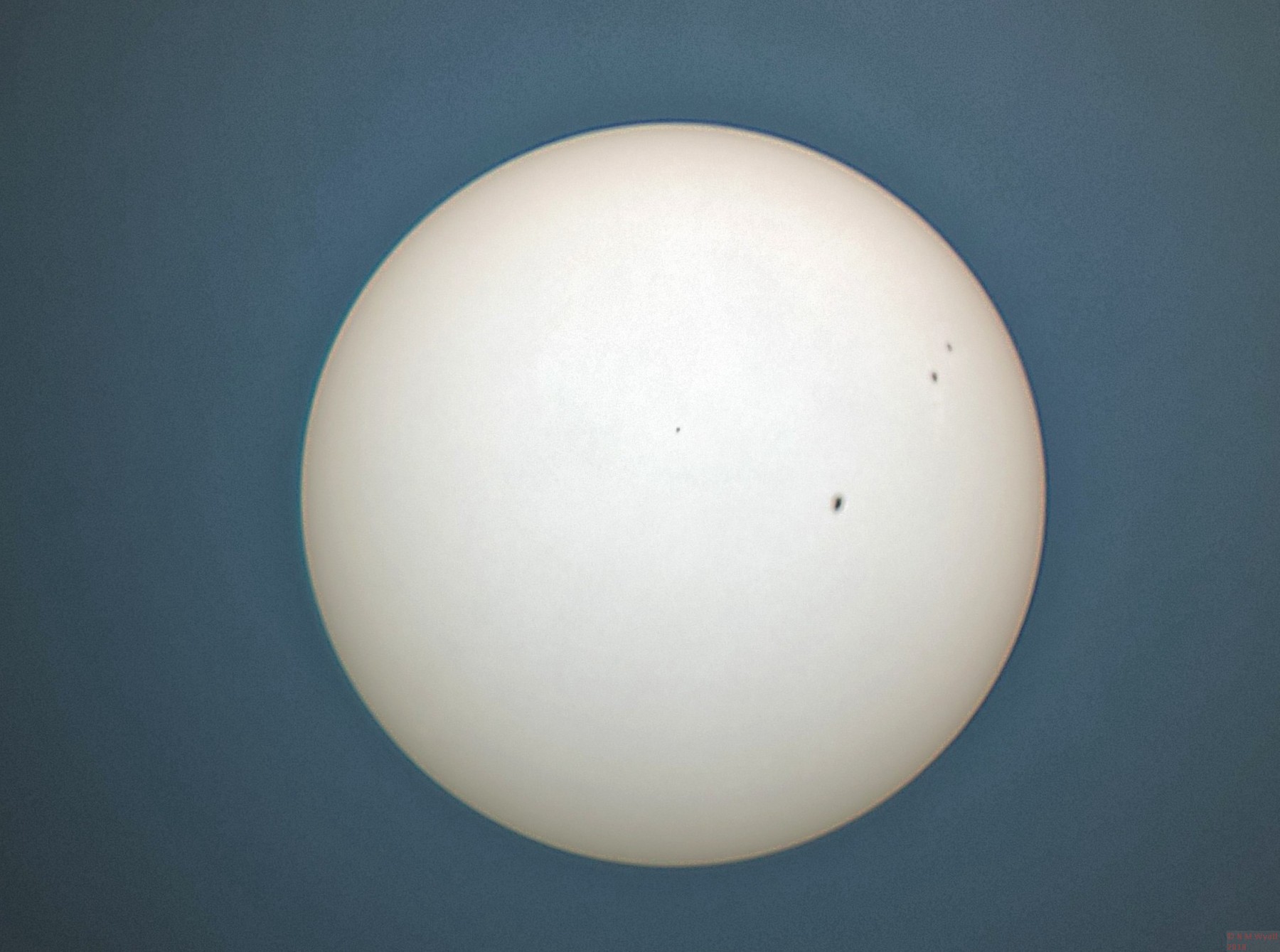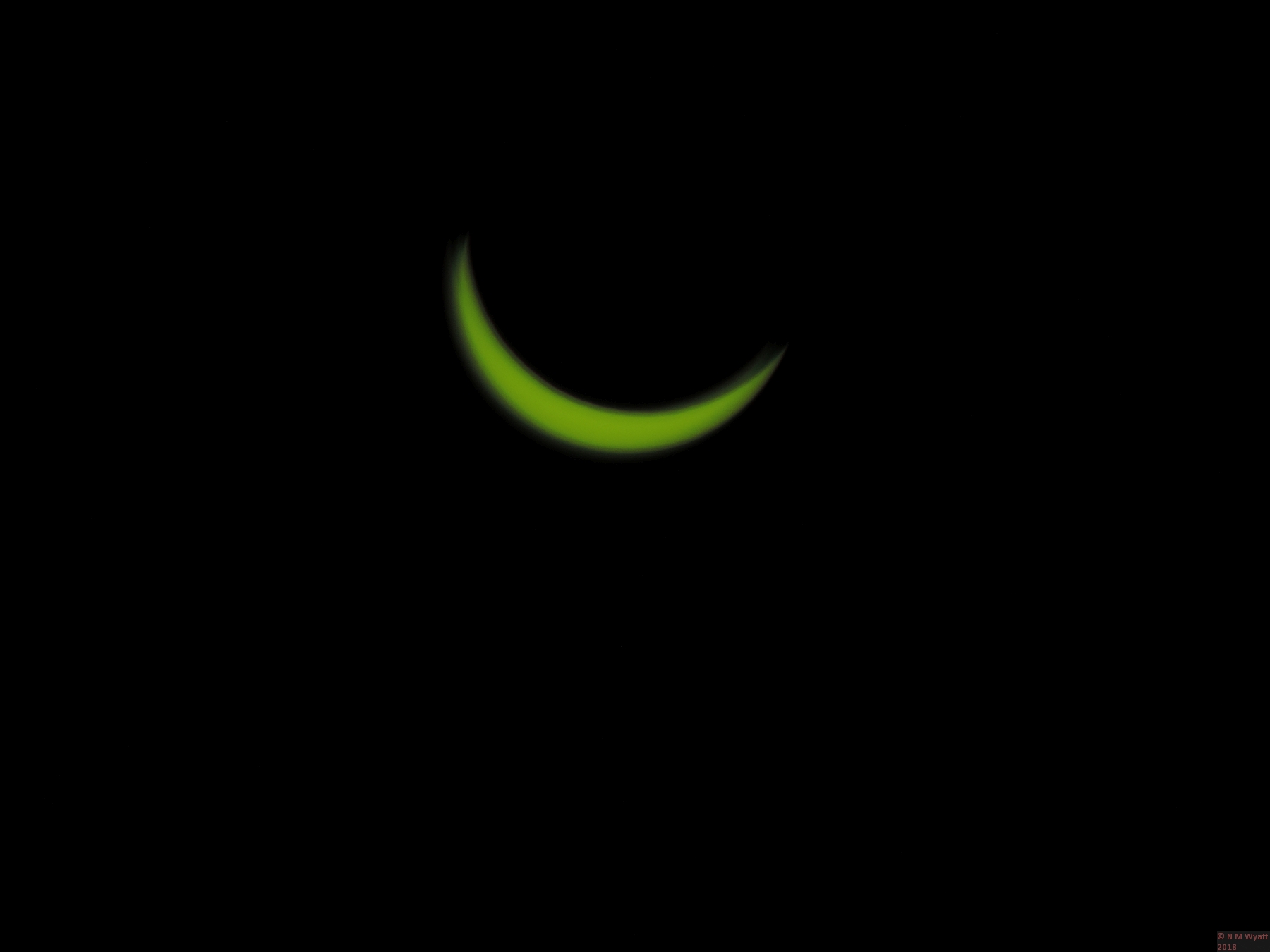I'm cautious about including the sun - too many people have blinded themselves looking at the sun through telescopes or even camera viewfinders.
If you want to know how to view or photograph the sun, there are safe ways to do it (some cheap, some very expensive but giving amazing results). The easiest way is projecting its image onto a sheet of paper or a screen.
Sunspots on the face of the sun
One other way, however, is to wait for a very foggy day when the fog is extremely even and thick. Sometime after sunrise it will be impossible to see the sun, but at some point you will probably see the sun as a faint disc. You must NOT look at the sun through a telescope in such conditions, but it is possible to photograph it with a digital camera using high shutter speeds. This picture is a stack of 25 full-frame shots and shows several spots. This is effectively in natural colour, although the image has been 'histogram stretched. There's another great bunch of sunspots HERE.
Sunspot groups AR2415, AR2418 (the big one) and AR2419 (the small one), on 20 September 2015
I have never seen a total eclipse of the sun, but I have seen a few partial eclipses. It's essential to use special viewing glasses, but if you do you can expect to see views like this.
The near-total eclipse of the sun in 2015.





